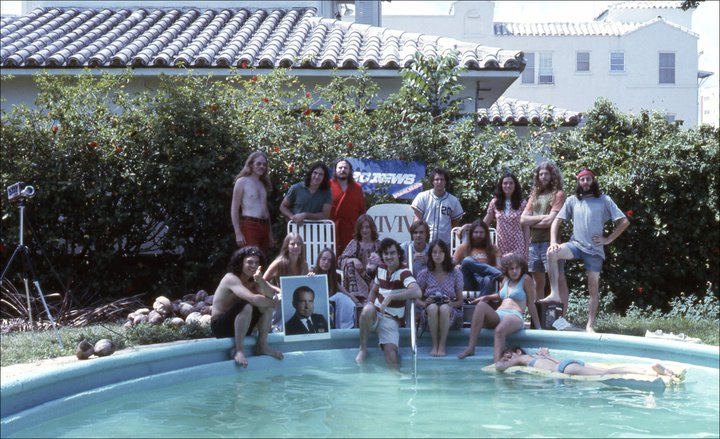
Video art and video documentary began in the mid-1960s, but the first shots of the TV/Video revolution can be traced back to 1972. The summer of 2022 marks the 50th anniversary of TVTV and the Guerrilla Television movement. It was the start of a radical, exciting new form of documentary that critiqued and questioned mainstream television. Seen by a small number of viewers all over America, it invented new ways to make television and changed what television could look like.
TVTV (“Top Value Television”) was a loose band of a couple dozen cutting-edge artists and journalists from Raindance, Ant Farm, the Videofreex, Antioch College, and Videopolis, along with a number of other independent videomakers. They met for the first time in Miami Beach to provide alternative coverage to the Democratic and Republican conventions. It was a labor of love: nobody was paid but the pop-up organization was able to score complete press credentials to cover the events. The collective of young radicals roamed the floors of the Democratic and Republican National Conventions and the streets of Miami with their Sony Portapaks, offering drastically different coverage than what you’d find with the established networks.
Nancy Cain, a member of TVTV and the Videofreex, would remember just how vividly they stood out on the convention floors:
Shooting video with TVTV made it glaringly obvious that we would never really fit the mold of the press corps. For example, we used to actually pass the camera around among us. That was the Videofreex method. The news media would never do that. Plus we would shoot way, way too much tape. Because we were looking for some authentic moments and we wanted a scene to unfold naturally. We weren’t going out for 30 second bites to roll into a newscast.
With their lightweight equipment, the TVTV crews could be far more casual in their approach than the reporters working with massive camera set-ups for the networks. They focused less on documenting the key events of the conventions than on capturing the “feel of the events,” casually conversing with people ranging from delegates to politicians to network anchors and taping anything that caught their interest. The footage is irreverent and frequently hilarious but also revelatory, exposing the absurdity of the proceedings while finding moments and details that illuminate the exact dynamics at work.
In the Washington Post, Gary Wills seemed to dismiss them as “long-haired and braless young technicians” but acknowledged that the footage they captured was “priceless,” and that it was so revelatory precisely because TVTV’s members were so unique among the journalists covering the conventions. The New York Times TV critic celebrated “TVTV’s success in providing a wholly different perspective on events that had already saturated American television sets.” The New Yorker opined that TVTV outdid the networks, while New York’s Richard Reeves declared that The World’s Largest TV Studio was “a flawed little masterpiece” and that TVTV “[did] exactly what CBS and NBC with all their millions didn’t do enough of: TVTV reports more than it interviews; it shows the confusion on the floor as delegates look for telephone and hand signals from George McGovern’s manipulators; it shows what the networks only tried to talk about.”
With dozens of hours of video for each convention, the group edited their footage into two hourlong tapes that aired on TV and cable stations around the country: The World’s Largest TV Studio, about the DNC, and Four More Years, about the RNC. The two were then condensed into a single 90-minute program titled Conventions 72 that aired on all six of the Westinghouse TV stations in late October, just before the elections.
TVTV would continue making videos throughout the 1970s, achieving even greater accolades (including a prestigious Alfred I duPont-Columbia University Award) with its 1974 documentary The Lord of the Universe. The members of that original 1972 crew – including Media Burn founder Tom Weinberg – would remain at the forefront of independent television, video, and movies for decades.
TVTV Selected Videography:
Vietnam Veterans Against the War Clips
TVTV: Diary of the Video Guerrillas
TVTV at the Gene Siskel Film Center’s “Conversations at the Edge” series in 2012
Media Burn Virtual Talks 2021 with TVTV co-founders:


0 Comments
You can be the first one to leave a comment.